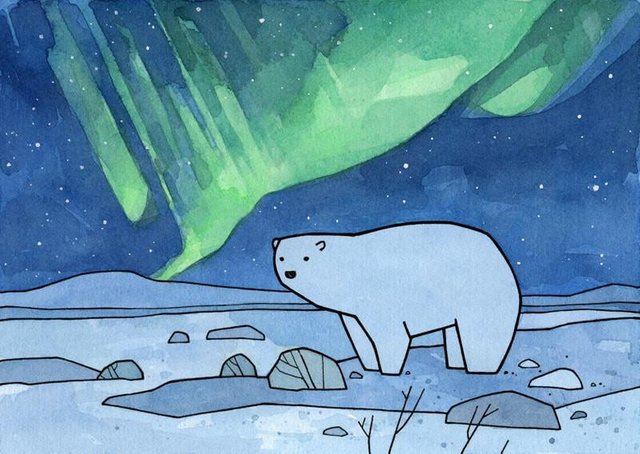Polar Bears: Facts and Information
Howdy! Arden here again...
It's been a while since I step foot on this platform and all I can say is, it has been a hell of a roller coaster ride. I haven't been engaging much into the community mainly because I really don't have the luxury and privilege of time.
Few days back, I just a week off from work and I was able to spend most of it with my loved ones. It was really a wonderful to mingle with the kids and spend time playing and watching the television. I just wish I could spend more time with them.
Anyway, before I head back to the city for work, I was able to scan through my old books and was able to find one of my favorite book about bears. I spent a couple of hours browsing online and managed to find some good info.
Polar bears have a long and amazing history. In fact, the history of the polar bear dates back well over 100 000 years. Polar bears are a divergent species of the brown bear and are often referred to as sea bears.
They are classified as Ursus maritimus and live mainly in the Arctic Circle feeding on seals and living on ice flows.
Polar Bear Feeding Habits
Polar bears are considered to be one of the largest meat eating mammals living on land. They feed mainly on ringed seals. A polar bear will wait for a seal to surface the ocean's water for air or for rest and when this happens the polar bear will quickly and efficiently use it's paw to pull the seal out of the water and onto the ice.
Once the polar bear has captured a seal it will kill the seal by biting down on the head with its teeth. Polar bears are patient hunters and can often wait for hours or days for its prey to rise to the surface.
Polar Bear Habitat
Even though polar bears are considered a land mammal they are also considered a marine mammal. This is because they live on the arctic ice flows and hunt ocean animals. In order to survive polar bears need to remain close to their food source. Since seals are their preferred food source they will follow the ice flows in search of seals.
Polar Bear Communication
Polar bears are usually solitary animals. However, when polar bears come into contact with other polar bears or if a female has cubs they will communicate with one another using a variety of noises and body movements.
When a polar bear feels threatened it will hiss, growl, lower it's head or make grinding noises using its teeth. This usually occurs when a polar bear is threatened by another animal or a human.
Polar bears also display a wide variety of other noises including loud roaring, deep growling and gentle purring noises.
Polar Bear Size
Polar bears are extremely large animals. Adult male polar bears range in size from 6.5 to 12 feet in length and weigh between 775 to 1200 lbs. Adult females are smaller than their male counterparts. Females range in size between 6 to 9 feet in length and weigh between 330 to 650 lbs.
The largest polar bear on record was killed in 1960 in Kotzebue Sound, Alaska and had a recorded weight of 2210 lbs and was 11 feet and 11 inches in length.
Polar Bear Life Span
Polar bears usually live between 15 to 18 years. The oldest polar bear on record was a captive polar bear from the Assiniboine Park Zoo in Winnipeg, Manitoba. The bear named Debby was born in 1966 in the Russian Arctic and died in the zoo in 2008.
Polar Bears and Hibernation
Polar bears do not technically hibernate. For an animal to truly hibernate its heart rate will slow significantly and its body temperature will drop to 5C (41F). A hibernating animal will also have a slow rate of breath, is difficult to wake and will remain in its den for a period of days, weeks or months.
Polar bears do not hibernate but their metabolism does slows down significantly. Pregnant female polar bears will nest in a den for three months when they give birth but they do not hibernate.
Polar Bear Population
There are approximately 25,000 polar bears living in the wild. However, the polar bear population is declining due to climate change and loss of sea ice in the Arctic region. Other factors contributing to the threat of the polar bear include pollution, oil exploration, hunting and poaching.
The fact is that polar bear numbers are in decline due to climate change and other factors. If the Arctic continues to warm up and the ice flows melt it will put the polar bear in danger because it will no longer be able to successfully capture it's main prey.
Polar bears reside in five different nations including the United States, Canada, Russia, Greenland and Norway. They are a unique bear species and are considered both a land mammal and marine animal.
Polar bears are one of the largest bear species in the world with the Kodak bear being the other largest bear species.
References:
Polar Bears International - Facts About Polar Bears
World Wildlife Organizaton - Leader In Polar Bear Conservation
Polar Bear Planet - Polar Bear




Good job! Very informative. Followed nd upvoted you